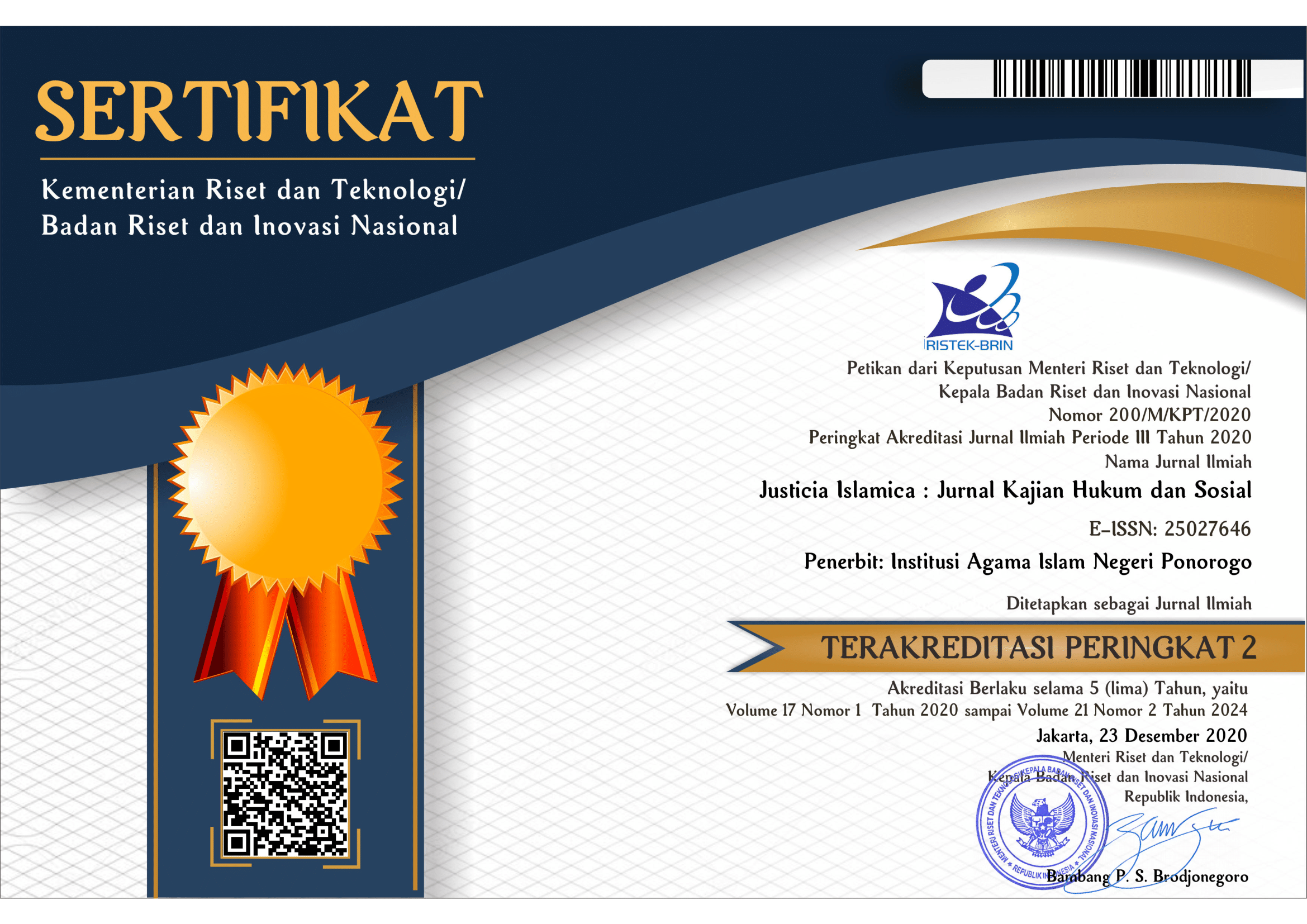Awliya’ in The Class of Islamic Political Symbolism: A Semiotic Approach
DOI:
https://doi.org/10.21154/justicia.v16i1.1652Keywords:
Awliya, Semiotic, SimbolicAbstract
Why QS. al-Maidah 51 is often used as a reference in determining the legitimacy and justification of the leadership of government elections? How to understand the symbolic (semiotic) meaning of using the awliya word in al-Maidah 51 in the context of leadership politics in Indonesia? To answer that question, this study uses literature (library research) by asking for semiotics. The results of the study state that the meaning of awliya is QS. Special Al-Maidah 51, in a semiotic manner, is tentative, open, and plural because of the nature of language that is not always arbitrary and universal (multiplicity meaning). Signifiers are significantly influenced by the background of institutional structure, paradigm, and the basis of political stretcher or their support. At the paradigmatic level, both symbolic (textual and contextual) meanings of awliya have a basis for scientific epistemology. While the aspects of his semiotic pragmatism (Peirce) can be measured, determine to what extent awliya's symbolic meanings is effective and followed by Muslims as part of citizenship; and how far awliya’ is accommodated in the instruments of the state legal system (legislation).
Mengapa QS. al-Maidah 51 kerap dijadikan referensi menentukan legitimasi dan justifikasi kepemimpinan jabatan Pemerintahan? Bagaimana memahami makna simbolik (semiotik) penggunaan kata awliya’ dalam al-Maidah 51 itu dalam konteks politik kepemimpinan di Indonesia? Untuk menjawab pertanyaan itu, kajian ini menggunakan kajian pustaka (library research) dengan pendekatan semiotik. Hasil penelitian menunjukkan bahwa pemaknaan awliya’ QS. al-Maidah 51 secara semiotik bersifat tentatif, terbuka, dan plural karena sifat langue yang tidak slalu arbitrer dan universal (multiplicity meaning). Pemberi makna (signified) sangat dipengaruhi oleh latar struktur institusi, paradigma, dan basis politik usungan atau dukungannya. Pada level paradigmatik, kedua makna simbolik (tekstual dan kontekstual) awliya’ memiliki basis epistemologi keilmuan. Sementara aspek pragmatisme semiotiknya (Peirce) dapat diukur sejauhmana pemaknaan simbolik awliya’ itu berlaku efektif dan diikuti oleh umat Islam sebagai bagian dari kewarganegaraan; dan sejauhmana awliya’ itu diakomodir dalam instrumen sistem hukum negara.
Downloads
Published
How to Cite
Issue
Section
License
Requirements to be met by the author as follows:
- Author storing copyright and grant the journal right of first publication manuscripts simultaneously with licensed under the CC BY-SA allows others to share the work with a statement of the work's authorship and initial publication in this journal.
Authors can enter into the preparation of additional contractual separately for the non-exclusive distribution of a decadent version of the journal issue (e.g., post it to an institutional repository or publish it in a book), with the recognition of initial publication in this journal.
Authors are allowed and encouraged to post their work online (e.g., in institutional repositories or on their website) before and during the submission process because it can lead to productive exchanges and citations earlier and more severe than published works. (see The Effect of Open Access).
This work is licensed under CC BY-SA.


















